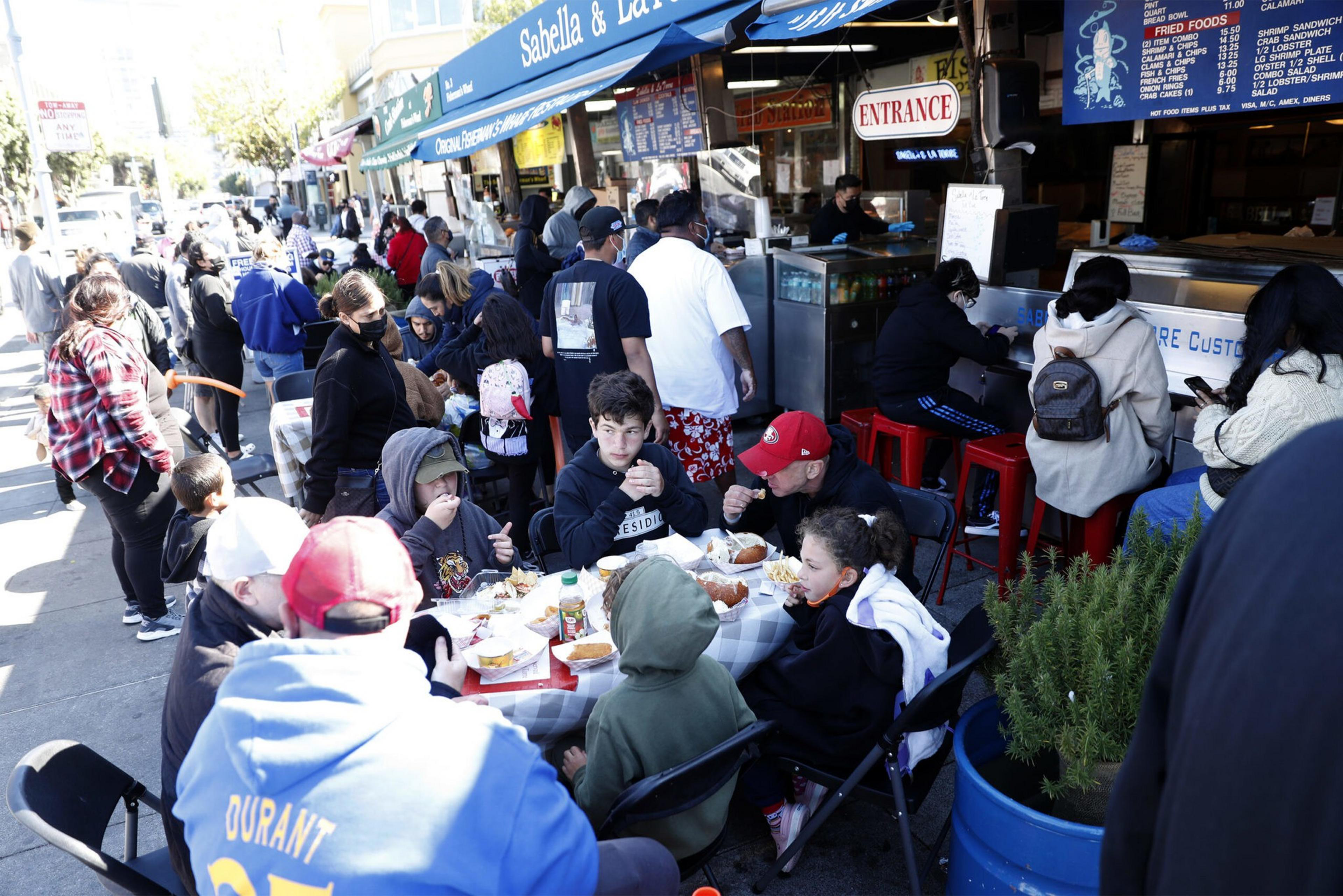In preparation for the return of tourists to San Francisco, Mayor London Breed and the San Francisco Police Department (SFPD) announced a new officer deployment plan on Monday in an effort to assuage visitors’ fears over crime and safety in the city.
With summer visitors trickling back to the city, Breed and Police Chief Bill Scott said the department will deploy 26 additional officers, on bicycle and on foot, to five districts popular with tourists.
“We have work to do to make sure that when people come to San Francisco … that they feel safe,” said Breed. “So you will see more officers in Chinatown. You will see more officers at the Palace of Fine Arts and at Alamo Square and in Union Square.”
The city expects 15.3 million visitors by year’s end, significantly fewer than the record 26.2 million visitors in 2019 but an improvement from 2020’s pandemic-driven low of 10.2 million visitors.
As part of the new deployment plan, 14 officers will patrol the Central Police District, which includes Union Square, Market Street, Powell Street, Chinatown, Pier 39 and Fisherman’s Wharf. The Mission Police District, Park Police District and Richmond Police District will see two additional officers, respectively. The Northern Police District will have six additional patrols around the Palace of Fine Arts, Alamo Square and Japantown.
Tourism is a major cash cow for San Francisco: In 2019, visitors spent over $10 billion, supported more than 86,000 jobs and fueled $820 million in city taxes and fees, according to the San Francisco Travel Association (SF Travel). Tourism spending plunged 80% in 2020, and city revenue associated with tourism fell nearly 67% to $273 million.

A report released in March (opens in new tab) estimated that total visitation will not return to pre-pandemic levels until 2023, and that total visitor spending may not recover until 2025. International travel is expected to recover more slowly than domestic travel.
“The recovery is going to be long and slow and painful,” said SF Travel President and CEO Joe D’Alessandro. “But it is absolutely essential that visitors to San Francisco feel safe when they come here and they have a great experience.”
The 26 additional officers are intended to deter crimes that frequently target tourists, and to make arrests as swiftly as possible when crimes do happen.
“You’ll see [officers] in the Marina and the Palace of Fine Arts. A word to people breaking into cars around the Palace of Fine Arts: You will be caught,” said Scott.
For the upcoming budget cycle, the San Francisco Board of Supervisors approved additional police overtime pay and 135 new officers over two years. Scott had originally asked for 200 new officers to address a staffing shortage and make up for an expected wave of retirements.
The police department expects to lose 111 officers between fiscal years 2021 and 2022, and another 80 in the year following, Scott told the Board of Supervisors in March. Scott pointed to a March 2020 study (opens in new tab) by an independent consulting firm, Matrix Consulting, that described SFPD’s patrol staffing as “severely inadequate” and recommended 2,176 full-time officers. SFPD currently has about 1,780 sworn officers.

The 26 officers deployed to tourist zones will be largely funded by overtime, and the 135 officers approved in the upcoming budget will help the department “not shrink,” according to Scott, and perhaps to grow slightly if fewer officers retire than expected.
“I want to stress that these additional deployments under this plan will supplement, not subtract from, our existing citywide deployment,” Scott said on Monday. “We’re going through some challenging times right now and we had to make some tough decisions. I want to thank the Mayor and the Board of Supervisors for giving us additional overtime this year.”
During the budget process, critics of SFPD asserted that new, non-police responses to street-level concerns—such as the various street response teams funded in the upcoming budget cycle—should reduce the need for police funding. Meanwhile, some business and other community leaders have urged more police patrols amid rising concerns over property crimes, attacks on seniors and other high-profile incidents.
“We’re very pleased that additional officers are deployed here, and I can see from my experience yesterday, it was great to be in Chinatown and great to be in the city,” said Larry Yee, President of the Hop Wo Benevolent Association and a member of the Police Commission.
At a press conference last week, Breed and Scott painted a mixed picture (opens in new tab) on crime in San Francisco, pointing to a drop in reported auto break-ins and larceny theft alongside a rise in burglaries and shootings. On Monday, Breed expressed frustration with the perception—among some locals and tourists—that the city is unsafe.
“In almost every single instance when there was a violent attack, this police department…has made arrests and I’ve asked the press and others to make it clear to the public that you will not get away with committing these horrible acts in our city,” said Breed on Monday.
The new officer deployment plan is one of several initiatives aimed at improving public safety in high-traffic parts of San Francisco.
In the Tenderloin and Mid-Market areas, SFPD boosted its officer presence alongside a team of “community ambassadors” trained to de-escalate conflict, address trash and other sanitation concerns and act as a helpful neighborhood presence.
In Union Square, the city plans to add community ambassadors in conjunction with new public art and events programming to enliven the shopping and tourism corridor.
“To the 15 million or so visitors that come to the city each year, we want you to know: This is a safe city; this is a great city,” added Scott.